Energy
Multi-dimensional growth
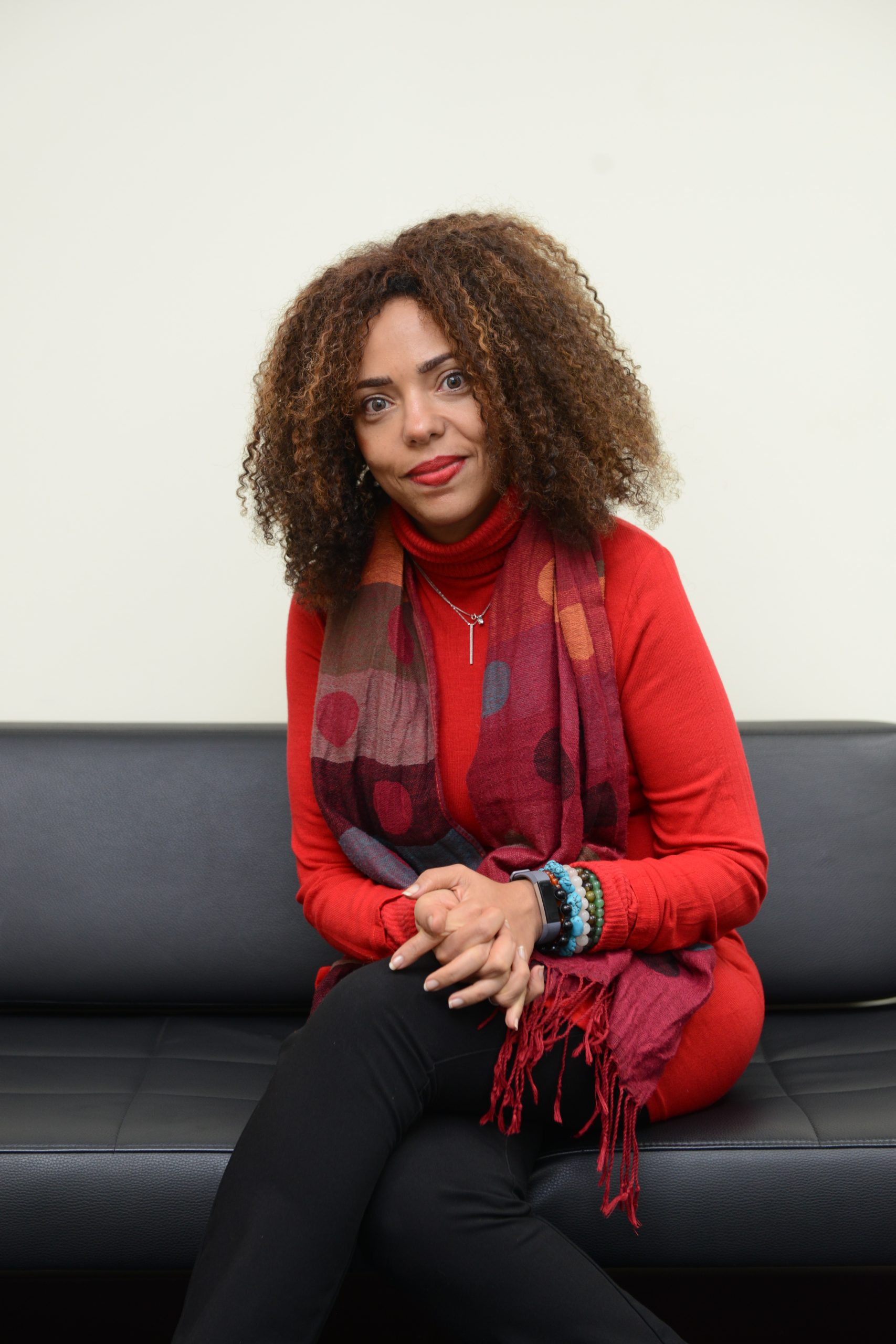
Hanan Darwish, President, Gulf and Pakistan, Schneider Electric shares her thoughts on IoT and digital solutions changing power distribution, consumption in the GCC and worldwide
How was Schneider Electric’s financial performance in the GCC in 2017?
It has been better than our expectations. There was certain uncertainty in terms of the availability of cash in the market, the pace of projects and market sentiment. As this came on the heels of 2016, which was not one of the best years, it added to the uncertainty. The oil & gas segment got impacted as prices dropped and it had a cascading effect. As 20-25 per cent of our business is based on the oil & gas sector, the fortunes of the industry matter. We started a diversification strategy of our business model in 2017 pro actively. We are being cautious, looking at our costs and evaluating if we can optimise non-value added costs compared to people costs and start building for the future. This entails moving from our product based model to an ExoStruxure story of Schneider Electric, so that it becomes a more connected product based on the Internet of things (IoT). Going from connected products to the enablement of the software part, data analytics, services through the applications that we can develop etc.
The ExoStruxure story can be replicated across sectors. We started a very big Innovation Summit, where we invited over 4,000 customers from the GCC and Pakistan. As we want to take it a step further beyond a summit, we created an Innovation Hub on wheels – which is a large truck with all of Schneider’s solutions in every segment built in it. The purpose is to develop our customer set by telling them the Schneider story. While many things were happening at the same time, we were not staying in our fear or comfort zone. We took it as a challenge and pushed in the right direction, created our story and showed the entire market that Schneider is really resilient even in tough times. Our order book grew by double digits and in terms of sales too, we had a humble two digit growth, when the average market growth rate was around two to three per cent.
What were the major initiatives taken by the company in FY 2017 in the region?
A lot of initiatives were taken like the announcement of Schneider Electric becoming the fourth hub of the group. As we are a multinational company, we have our headquarters in France and our hubs in Hong Kong, the US and now Dubai is our fourth hub. It means that the heads of these hubs report to Jean-Pascal Tricoire, the Chairman & CEO of Schneider Electric directly. The company’s energy business is based in the MENA region. Our CEO visited Dubai in November 2017 and met VVIPs and very senior ranking people like HH Sheikh Mohammed bin Rashid Al Maktoum, Vice President and Prime Minister of the United Arab Emirates. It is important to convey that we are no longer a product company but a solutions company. We are contributing to the transformation based on IoT in the digital part of the world.
How is IoT and digital solutions changing power distribution, consumption in the GCC and worldwide?
It is not just about electrical distribution anymore, but a matter of energy efficiency, optimisation, reliability and this is what IoT or ExoStruxure is bringing. If you are consuming electricity, you need to have the data analytics to show your level of consumption. Electricity is becoming rare. It is becoming more digitised, decarbonised and decentralised. Today, we have power plants based on solar and full connectivity. Schneider’s ExoStruxure offers customers solutions to optimise electricity and to see how safe, reliable and beneficial it is. They can connect back to the grid to see how diversified their power generation is from solar, wind etc. This is a mega trend and that’s the reason why IoT is becoming so important by connecting products to get data which can be analysed and worked upon.
Oman removed electricity subsidies for large commercial establishments in 2017. What can your company offer them to reduce escalating power bills?
I am very happy that this happened, though I am the first one to be impacted by the decision. Coming from France and the US, this was my first shock in the region. The awareness of how energy is precious and rare was not at its optimum level here. We can provide solutions, but before optimising a customer needs to know as to where the pain is. Let’s take building solutions for instance, where 80-90 per cent of the electricity consumption is through air conditioners. Schneider offers solutions to big electricity companies by providing auditing and seeing where the gaps are. The next stage is to enhance energy efficiency and help save money by offering analytics through building asset management. Overall, customers get their return on investment. Our solutions range from products to smart metering and all the things that help us to collect and analyse data and how to provide solutions. The most challenging part that we do through our consultancy in Schneider Electric is – Energy Consumption Consultation (ECC). Awareness is very important, because you can have the best optimised solution, but it requires a behavioural and mindset change to be effective. People don’t realise that subsidies have been removed till they start getting bills.
The GCC region is facing energy challenges like high consumption and wastage. How can Schneider electric help in improving efficiency?
We help our customers in brownfield projects which are fully operational. Sometimes we offer our solutions for free by telling our customers – ‘let us do your audit for free.’ This can be a technical audit or be on their operational base which includes the process itself – we are the specialists in this field and then we go onto prescribing a solution and this need not be a very expensive solution.
Is energy efficiency on top of your agenda?
It is on top of my agenda because of how my business model is changing. Earlier my products and solutions were marketed by partners like distributors, but now we are approaching end users like CEOs of companies directly, as it is a pain point for them. Another point which is important to note is that between us and our competitors you will find similar stories about what we and they can provide. Schneider’s big advantage is that we work through an open system, which means that our products and solutions are not connected to the cloud, allowing us to enter into a software project where our prices are similar. When we enter a company, that company does not have one system from Siemens or ABB.
They have multiple systems, so one needs to pull all of these systems together. It is unlikely that the company is going to collapse all of it together and install products of one company or install a software that would plug to all of those pre-existing systems and products, without additional cost. Schneider Electric’s products are connectable and interoperable. The integration cost is negligible, while for other companies, this costs a fortune. Some of our competitors say that we are overcoming Schneider by providing cloud based solutions, but most of our customers don’t want to go through cloud due to security concerns. Our solutions are in line with the need of customers and offer cyber security.
Can you give us a brief on EcoStruxure and its usage across industries?
EcoStruxure has three layers, it starts from the base which is the core business of connected products. All our products are connected, which means that they have Wi-Fi, speaking options with the highest technology. The second layer is called ‘Edge Control,’ once you have the tools in place you require something to pull the data from those products in a more logical manner. The Edge Control model can be applied to anything. Then comes the third layer, once you have that data, you needs apps, analytics and reporting on what you are doing with the consumption. Those are the three layers and I can go to a factory, for example, which we call brownfield projects and find out our customers pain points. We can map your consumption, do the readings and tell you where you can save. It is not a one size fits all model, but one where we can customise and tailor make a solution to fit the needs of the customer. We have our own solutions, software, Scada, products for all the ranges, automation and all that fits into ExoStruxure.
How big of a client is the oil & gas industry for Schneider Electric?
It used to represent 70-80 per cent of my business directly or indirectly through our partners. Today, we are diversifying and it is around 50 per cent. We are serving other segments through data centres which can go not only into telecom but also into banking and the cloud. We are also penetrating into the likes of real estate, hospitals, hotels, manufacturing etc. We are not moving away from oil & gas as prices have starting moving up and the industry will be back, but relying on a single sector is not a sustainable business model. We have learnt this from experience.
What are Schneider Electric’s plans for the GCC in 2018?
We will continue to diversify, there is going to be a more end user approach. We will be growing EcoStruxure as it is a big priority and we will be developing our partners on our EcoStruxure mission. We are making sure that we have strong partners as today we need to have strong system integrators which are capable of implementing those solutions, because quality is important. We have to make sure that our customers are getting the best possible solutions irrespective of the political situation in the region.
Can you give us a brief about your professional background?
I have had my career in two companies – Procter & Gamble and Schneider Electric. In Procter & Gamble, I was involved in sales & marketing and business development in USA, Belgium and Egypt. I moved to Schneider Electric in 2000 to start-up the company’s Gulf business. We started with 15 people and now we are close 3,000. We opened offices across the region and laid the foundation. Then I took over North East Africa being based in Egypt for three years as the head of HR. I moved to France in corporate roles in Schneider University, heading HR France as Vice President for five years.
I shifted to North America for two and a half years heading HR and transformation and then going back to France as the head of strategy for the Energy Business unit which was a $5bn business. Subsequently, Schneider Electric made me an offer to be the cluster President, previously it included only Gulf but now it includes Gulf and Pakistan. Overall, it has been an interesting and satisfying journey.
-
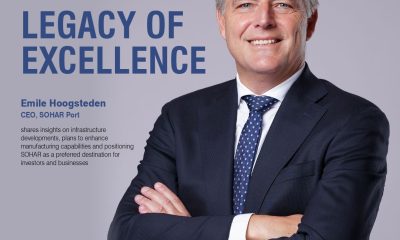
 Magazines1 month ago
Magazines1 month agoOER – September 2025 Issue
-

 News1 month ago
News1 month agoKitchenomiKs Secures Investment of US$3.2M Led by Jasoor Ventures
-
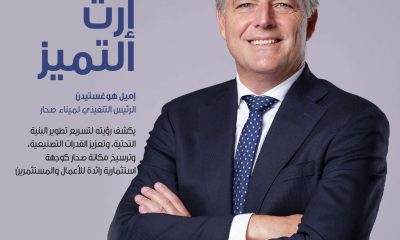
 Alamaliktistaad Magazines1 month ago
Alamaliktistaad Magazines1 month agoAlam Al Iktisaad – September 2025 Edition
-
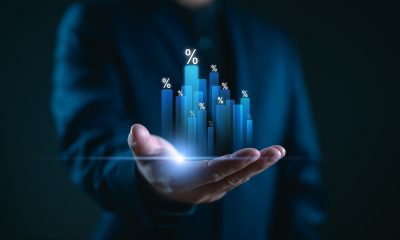
 News2 months ago
News2 months agoCent Capital, AI Finance App by ex-AWS Strategist ‘The Beast of Bay Area,’ Launches to End Financial Anxiety, Hits $1M AUM
-

 News1 month ago
News1 month agoOman Inaugurates ‘Hadatha’ – Its All-New Cybersecurity Center
-

 Banking & Finance1 month ago
Banking & Finance1 month agoOman Arab Bank Highlights Its Ongoing Strategic Initiatives and Future Plans
-

 News1 month ago
News1 month agoIEA Expects Global Oil Market to Remain Oversupplied in 2026
-
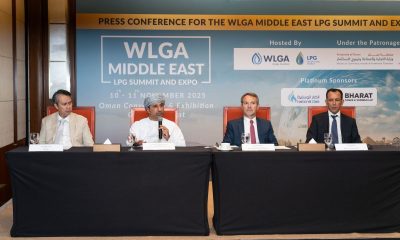
 Energy1 month ago
Energy1 month agoWLGA Middle East LPG Summit & Expo 2025 to be held at OCEC on November 10 and 11































You must be logged in to post a comment Login